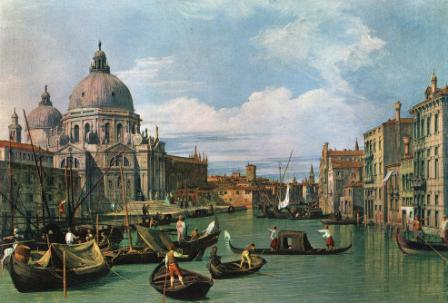Eighteenth-century Venice was famous as a city of spectacle and diversion, of louche pleasures and festive entertainments. The only one of Italy’s city-states to have preserved its republican status, even during the tumultuous territorial wars of the Renaissance, Venice had long paraded itself as a bastion of political liberty. But during the years of its glittering decline, when its power was eclipsed and its once great trading empire shrunk to almost nothing, it came to stand, rather more uncertainly, for a moral and sexual freedom that could be experienced nowhere else in Europe. The French historian Charles Montesquieu, who travelled there in 1728, snootily remarked that Venice still stood for liberty, but “the kind of liberty most decent people do not want to have: to visit the girls of the town in broad daylight; to marry them; not to have to perform one’s Easter duties; to be entirely unrecognised and independent in one’s deeds: there’s the liberty that one has.”
No painter caught the appearance and seductive appeal of eighteenth-century Venice more brilliantly than Giovanni Antonio Canal, popularly known as Canaletto. Born in 1697, near the great bridge of the Rialto, he spent much of his long career painting sunlit views of the city’s canals and palaces. He depicted its religious processions, its festival occasions and many a sleepy morning aftermath of the debauched night before. His work was both symbol and product of Venice’s metamorphosis from world power into tourist attraction. Canaletto was admired, above all, by the numerous English milords who travelled to the city during the first half of the eighteenth century, on the pretext of that supposedly self-improving journey of discovery known as the Grand Tour. But the finest collection of his work was formed by an Englishman who actually lived in there, Joseph Smith. A...

Canaletto in Venice at The Queen’s Gallery 2005
27-11-2005

